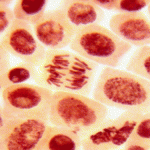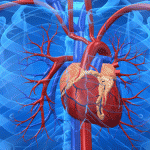
3.5 million Australians were reported as having cardiovascular disease in 2007-2008. Image: Dariush M./Shutterstock
A molecule that turns stem cells into heart cells could be the answer.
Cardiovascular disease is the leading cause of death by disease in Australia, with 50,000 people dying as a result this condition in 2008. We can’t simply replace the damaged or diseased heart cells, so the condition irreversibly leads to a decline in heart function and death, unless the cells are replaced by transplanting an entire heart.
Many scientists are now turning to stem cells for an alternative solution. Researchers at Sanford-Burnham Medical Research Institute (Sanford-Burnham) in the US and their colleagues at the Human BioMolecular Research Institute and ChemRegen, Inc. have been searching for the molecules that convert stem cells to heart cells for years — and now they’ve found one.
“The heart has a very limited but measurable natural ability to regenerate,” says Dr Mark Mercola, director of Sanford-Burnham’s Muscle Development and Regeneration Program and senior author of the study published in Cell Stem Cell. “Boosting this potential would be far less invasive way to rebuild heart muscle than transplanting a whole heart, or even injecting heart muscle cells into the heart.”
Mercola has been working for about 18 years on the signals that drive stem or progenitor cells to become heart muscle. He and his team used this information to develop a drug screen to search for the figurative needles in the haystack — molecules that stimulated the formation of heart cells.
“As it turned out, the molecule targeted a pathway that we knew a lot about, but did not actually know was involved at that particular critical step. Thus, the unbiased drug screen actually taught us something new about what pathways to activate in order to make new heart muscle cells.”
The molecule in question, ITD-1, is a selective inhibitor that makes cells insensitive to signalling from transforming growth factor-beta (TGF-beta), but does not block other signals. The researchers believe that it could be used to create heart muscle cells in vitro, which would be useful for enhancing the production from stem cells for research purposes such as drug discovery.
Mercola says that TGF-beta is also involved in processes such as connective tissue disorders and fibrosis, so the compound might be useful to treat these conditions as well. “In addition, some researchers are trying to coax a patient’s own cells to become heart muscle cells outside the body, then re-implant these cells back into the injured heart. ITD-1 could be useful for this application as well.”






